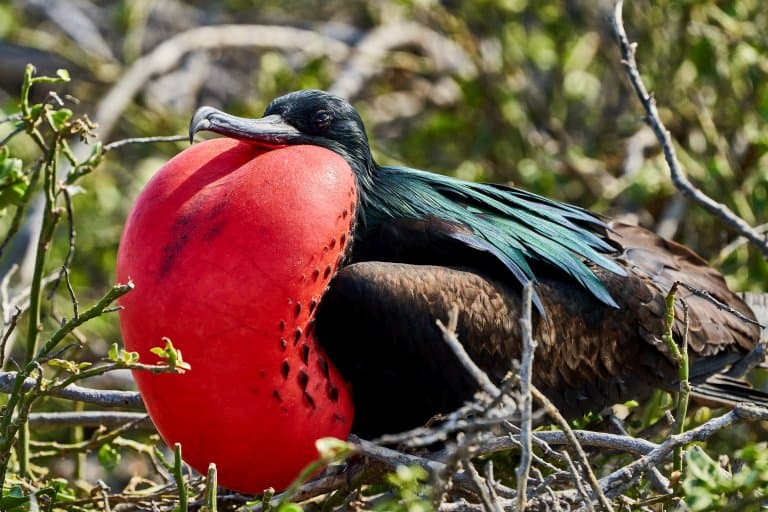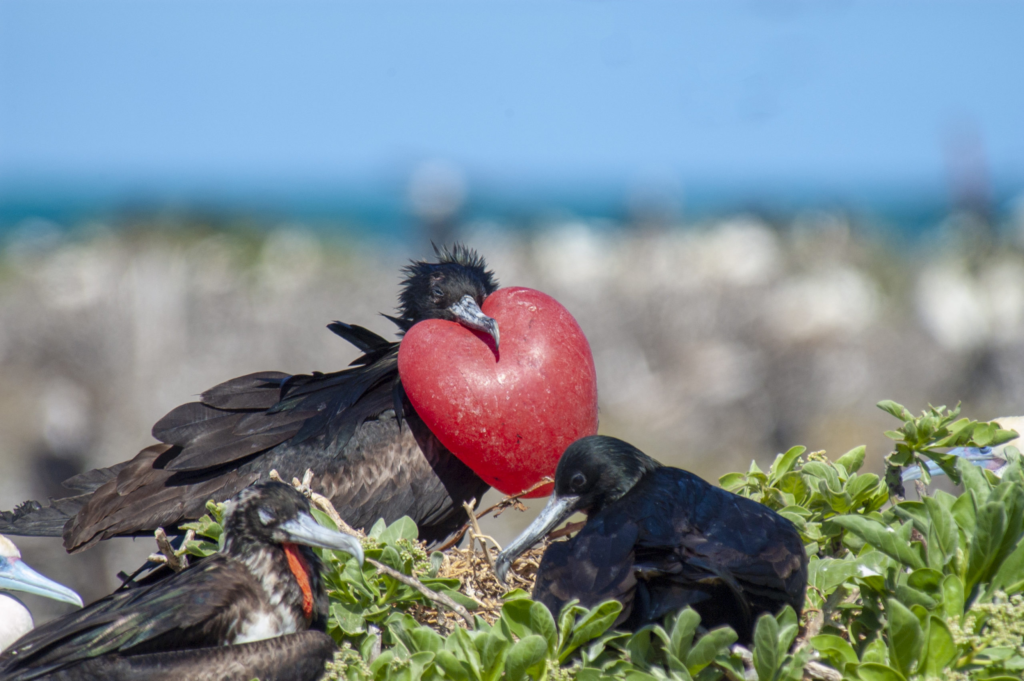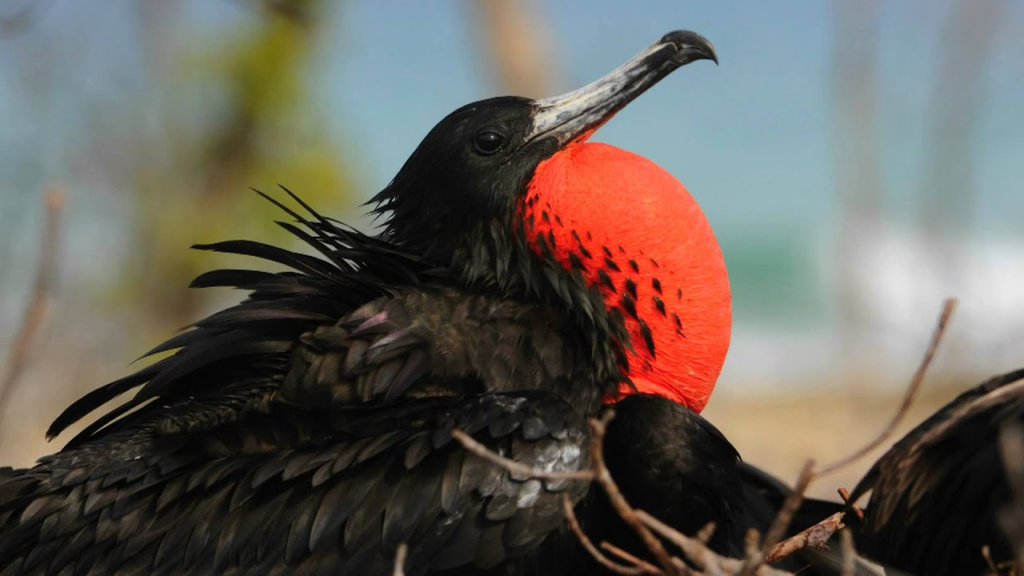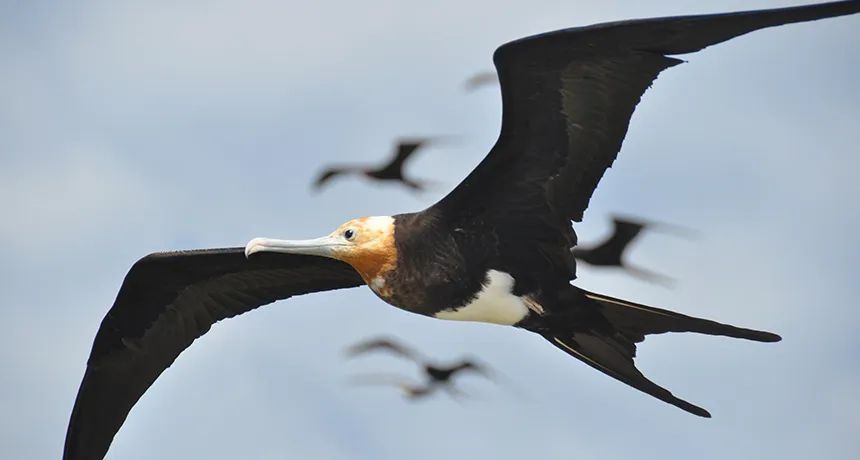The majestic frigate bird : Explore the intricate world of frigate birds, from their mesmerizing aerodynamics to captivating mating rituals. Learn about their unique feeding habits and unravel the mysteries of these coastal rulers.
The majestic frigate bird : Introduction
Frigate birds, belonging to the family Fregatidae within the orders Pelecaniformes or Suliformes, are a fascinating group of seabirds that captivate with their aerial prowess and distinctive physical features. Comprising five species, frigate birds are renowned for their incredible wingspan, impressive flight abilities, and unique breeding habits. In this article, we delve into the characteristics, behavior, and global distribution of these majestic birds that rule the skies above tropical and semitropical coasts and islands.
ALSO READ : The Venus Flytraps : The Fascinating World Of Carnivorous Plants

Physical characteristics
Frigate birds are roughly the size of a chicken, with adult males typically donning an all-black plumage, while adult females display white markings below. One of the most striking features of these birds is their exceptionally long, slender wings, stretching up to 2.3 meters or nearly 8 feet, and a deeply forked tail. Adult males sport a bare-skinned throat pouch, which transforms into a vibrant red during courtship displays, expanding to the size of a person’s head. The peculiar characteristics of these birds also include tiny, almost helpless feet with four webbed toes and a long hooked bill, employed skillfully in attacking and robbing other seabirds of their catches.

Flight mastery
In addition to their extraordinary aerial abilities, frigate birds also possess an impressive wingspan that aids in their extended flights over vast ocean expanses. Their mastery of the air extends to their ability to travel incredible distances during migration, navigating across oceans with remarkable precision. These seabirds are highly adapted to a nomadic lifestyle, relying on the air currents to cover expansive territories in search of prey. Despite their reluctance to land, frigate birds are social creatures, often engaging in intricate aerial displays with their fellow flock members, showcasing not only their individual prowess but also their ability to coordinate in the skies.

Global distribution and breeding
These avian wonders are found across tropical and semitropical coasts and islands worldwide, generally staying within 100 miles of land. Frigate birds prefer to roost on land and return to their nesting colonies on islands. Breeding in crowded colonies, both male and female frigate birds take part in incubating the single white egg. The magnificent frigate bird, with a wingspan reaching about 115 cm (45 inches), is the largest species and is distributed along the coasts of America, the Caribbean Sea, and Cape Verde. Other species, such as the great and lesser frigate birds, breed on islands across the globe.

Taxonomic considerations
This reevaluation of frigate birds’ classification, previously placed in the Pelecaniformes order, has led to a reconsideration, now aligning them with anhingas, boobies, gannets, and cormorants within the Suliformes order. This adjustment stems from comprehensive genetic studies that employ molecular data analysis, revealing more accurate insights into the evolutionary connections among these seabirds. The shift in taxonomy reflects a nuanced understanding, challenging the conventional placement within Pelecaniformes. It underscores the dynamic nature of scientific classification, demonstrating the influence of genetic research in reshaping our comprehension of the relationships between different species and their evolutionary history.

Conclusion
In conclusion, frigate birds stand out as remarkable creatures, not only for their distinctive physical characteristics but also for their exceptional flight abilities and unique behaviors. As guardians of the skies and coastal realms, frigate birds continue to intrigue researchers and bird enthusiasts alike, showcasing the fascinating diversity of avian life across the world’s oceans.
To explore more news : Click Here
ALSO READ : The Bab Al Mandeb : Navigating Through The Gateway Of Global Tensions And Trade




































